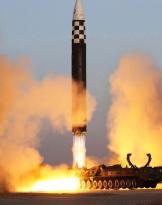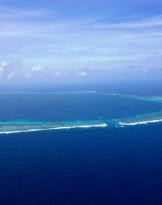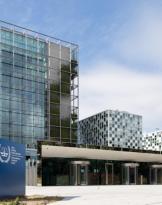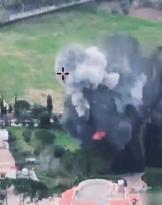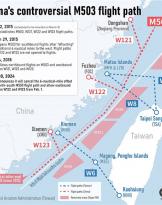The realization of the "unsinkable aircraft carrier", as the Chinese authorities call the artificial islands system in the East and South China Sea occupied and optimized with military and civil structures, now moves to the 2 phase.
Last May 9, the Asian Maritime Transparency Initiative website (https://amti.csis.org) had revealed a satellite image dating back to April 28, of a Chinese Shaanxi Y-8 aircraft, parked on the track of the Subi Reef base, in the archipelago of the Spratley Islands in the South China Sea, on which Beijing built three "outposts" (Subi, Mischief and Fiery) complete with runways and infrastructures of various types (dual use).
The event had aroused particular concern both because this line of aircraft, designed and used primarily with transport functions, has some variants used to carry out maritime patrolling and intelligence gathering, both for the fact that the Philippines, which are contending to China sovereignty over the Spratley, they have 12 miles away from Subi Reef a base with 100 civilian workers and a reduced military component to protection.
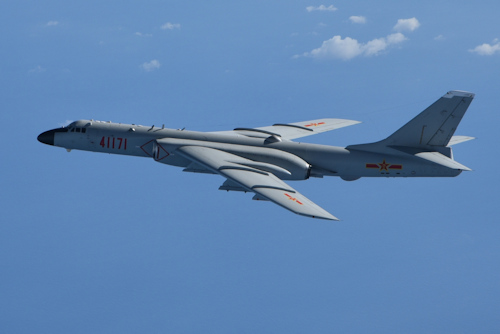
Yesterday, however, the news, this time published directly by PLAAF (People's Liberation Army Air Force) on the WEIBO institutional account (WEIBO: hybrid between Twitter and Facebook, is one of the most popular social platforms in the country, nda) and on the Twitter profile of the People's Daily newspaper, repeated tests of landing and takeoff carried out this time on Woody Island, the largest island in the Paracel archipelago (South China Sea), by some long-range bombers including H-6K ( photo).
Yesterday's event represents the confirmation of Beijing's desire to establish itself as the main power of the area in defense of growing economic and geopolitical interests.
The Country of the Dragon is now able to significantly extend, precisely from Woody Island, its ability to intervene throughout the South China Sea, thanks to the 1000 nautical miles (NM) of operational radius of the H-6k, which when completed the scheduled upgrading the line, extending the range of action to 1900 NM, will allow China to intervene in every corner of Southeast Asia.
As reported today by the AGI / AFP agency, Wang Mingliang, a military expert quoted in the Chinese government statement, spoke of having reached "strengthening combat capacity to tackle maritime security threats".
The US State Department reported this morning the NOVA agency, immediately remarked how yesterday's exercises contribute to "increase tensions and destabilize the whole area " .
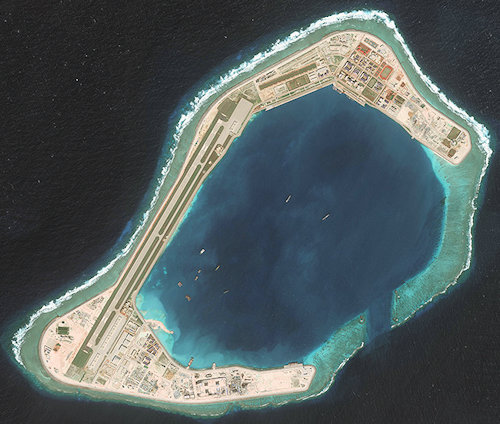 Beijing has long claimed the control of the Paracel atolls (occupied by China and claimed by Vietnam) and the Spratly (claimed entirely by China, Vietnam, Taiwan, and only partly by Brunei, the Philippines and Malaysia), over which it has long been engaged in the implementation of dual use infrastructures with missile batteries, hangars and runways.
Beijing has long claimed the control of the Paracel atolls (occupied by China and claimed by Vietnam) and the Spratly (claimed entirely by China, Vietnam, Taiwan, and only partly by Brunei, the Philippines and Malaysia), over which it has long been engaged in the implementation of dual use infrastructures with missile batteries, hangars and runways.
The Chinese sea is the main access point for the oil coming from the Gulf countries, coming from the Indian Ocean through the Strait of Malacca, through which the 40% of the world goods passes.
Furthermore, the Maritime Silk Road Initiative originates from the South China Sea: the imposing maritime infrastructure that with the Earth is the realization of Xi Jinping's "Chinese dream" for the XXI century: a coordinated set of terrestrial and maritime corridors that will interest 65 Countries in the world with 70% of the population, a global expression of 55% of GDP and 75% of energy resources.
(photo: Asia Maritime Transparency Initiative / Ministry of National Defense of the People's Republic of China)


